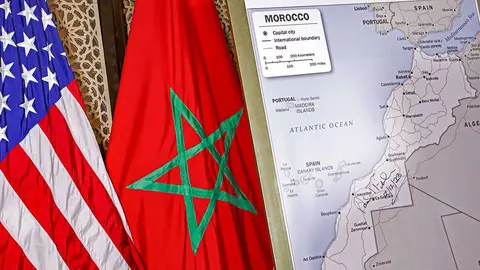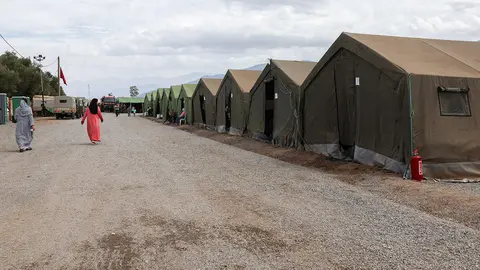Solidarity: Brand Morocco (MM)

Congratulations to Spain, Portugal and Morocco for the World Cup 2030.
The Kingdom of Morocco is doing things that only the great can do. It knows how to deal effectively and efficiently with any challenge. Its manifest resilience, both geopolitical and geo-economic, is making it a power that counts in the world on its own merits.
More than 350 international journalists from over 90 media outlets around the world had witnessed the effects of the seismic tragedy, as well as the overwhelming solidarity of Moroccans. A distinctive capacity that adds to Brand Morocco (MM).
Indeed, Morocco has just given the world a masterclass in how to manage the unexpected natural disaster that was the earthquake of 8 September 2023. It is comparable to the equally magnificent management of the pandemic of the 21st century, that of COVID-19. But there was also a lesson in humanity and solidarity provided by King Mohammed VI and by Moroccans from Tangiers to Lagüera, as well as by Moroccans living abroad (MRE) from the four corners of the globe.
All the country's provinces and their capitals, with their towns, villages and most remote customs, as well as national and international associations and from multiple groups on social networks had called for and organised urgent collections with trucks, vans and vans of food, clothes, tents, mattresses and blankets, as well as massive blood donations to help the victims of the earthquake. And from minute one.
The demonstrations of solidarity carried out on an individual and improvised basis were also very striking. We saw people arriving at the disaster sites with their own carloads of foodstuffs (water, bread and tinned food) which they unloaded onto the packs of horses, mules and donkeys at the foot of the mountains to negotiate the rough road to the survivors on the rubble-strewn hilltops.
National bodies such as the Mohammed V Foundation for Solidarity and specialised units of the FAR, the UME and Spanish fire brigades and other international institutions, such as the Spanish and Belgian Red Cross and Médecins Sans Frontières (MSF), had mobilised, hand in hand. Some for the rescue and others to collect funds for the affected provinces, Marrakech, Al-Haouz, Chichaoua, Taroudant, Azilal and Ouarzazate.
On the instructions of King Mohammed VI, the reconstruction programme for the devastated areas and their nearly 4.5 million inhabitants has been given the green light with a budget of 120 billion Dhs, just over 11 billion euros. This is a huge financial package to be invested over the next five years. It is an ambitious multi-dimensional programme that aims to turn the region into a prosperous area with the best possible facilities, as well as re-housing the people affected, rebuilding housing and the necessary infrastructure.
Thanks to the contribution of the State, national solidarity through the 126 Fund created for this purpose and to which large listed companies, SMEs and citizens in general have not ceased to contribute. In addition to the 1.3 billion dollars approved by the IMF to help the Kingdom face the challenges related to natural disasters.
In fact, the first direct financial assistance to the victims is already underway, and surveys have already begun. The newly created Agency for the Promotion and Development of the High Atlas Mountains (APDAA) has taken charge of this task, starting from a devastating balance sheet: more than 163 municipalities affected, 2,930 customs houses and some 60,000 damaged buildings, 32% of which were devastated and the rest partially destroyed.
Most importantly, the reconstruction will reduce the social deficit suffered by this region and especially its mountainous regions. It will put an end to its isolation, facilitate land communication and restore territorial and social balance. It will promote economic activity, employment and entrepreneurship among its people, and will promote local initiatives in all aspects. We would be talking about a prosperous rebirth of once forgotten regions, which would most probably be an example and a model for the other regions of the Greater Atlas.
Consequently, the sustainability of the reconstruction programme will depend on the technical and social integration of the affected communities. The aim will be to create futuristic infrastructure to minimise supernatural damage. The new architecture will have to be coherent with the nature of the place, with its colours and smells. The second criterion, the social one, and no less important, advocates the direct participation of the affected population. Involving the aborigines would help to preserve their tangible and intangible heritage and to promote and plan their future initiatives.
Respecting their architecture, the rites and rituals of their communities, their cultural context and, in short, their idiosyncrasies, will generate wealth and strengthen the roots of their lands and their particular identity and, in general, enrich the cultural diversity of the whole Kingdom.
It is therefore a possible, realistic and achievable reconstruction project. And the phoenix-like revival of the devastated provinces from the rubble over the coming years will be a success guaranteed by King Mohammed VI himself and by the enormous solidarity of the Moroccan people.
A solidarity that has always been part of the fundamental traditions of the Moroccan people. In case of difficulty, the Moroccan people stand up en bloc. Because its roots are deeply rooted in its long history and its attachment to the crown over the centuries. This is what gives it a special character and personality, "Brand Morocco" (MM). It also enables it to respond to any challenge, however incredible it may be. This is the fundamental characteristic of the Kingdom of Morocco and of Moroccans, and this is their way of being and doing things.



